Crafting the
Perfect Espresso:
Professional Tips
and Techniques
Making the perfect espresso is an art form loved by coffee enthusiasts everywhere. Whether you're a professional barista or simply enjoy brewing at home, mastering the craft of espresso can take your coffee experience to a whole new level.
In this guide, we'll explore all the key elements that go into creating an exceptional espresso shot. We'll cover everything from the basics and bean selection to grind size, timing, machine setup, and tamping.

Espresso Basics
Espresso is the heart and soul of almost all coffee based drinks, known for its rich, full-bodied flavour and aromatic intensity. But what exactly is espresso? At its core, espresso is a concentrated coffee brewed by forcing a small amount of nearly boiling water through finely ground coffee beans. This process produces a shot of coffee that is both strong and complex, with a layer of golden crema on top, which adds to its unique texture and taste.
Key characteristics of a good espresso include a balanced flavour profile, where sweetness, bitterness, and acidity harmonise perfectly. The crema, a thick, creamy froth, is essential as it locks in the aroma and flavour, giving espresso its distinctive quality.
The importance of using high-quality coffee beans for espresso cannot be overstated. The beans you choose will significantly impact the flavour and overall experience of your espresso. Look for beans that are fresh and roasted specifically for espresso. Single-origin beans can offer unique flavour notes, while blends can provide a balanced and consistent taste. Remember, the quality of your espresso begins with the quality of your beans, so learning how to choose the best coffee beans is the first step towards crafting the perfect shot.
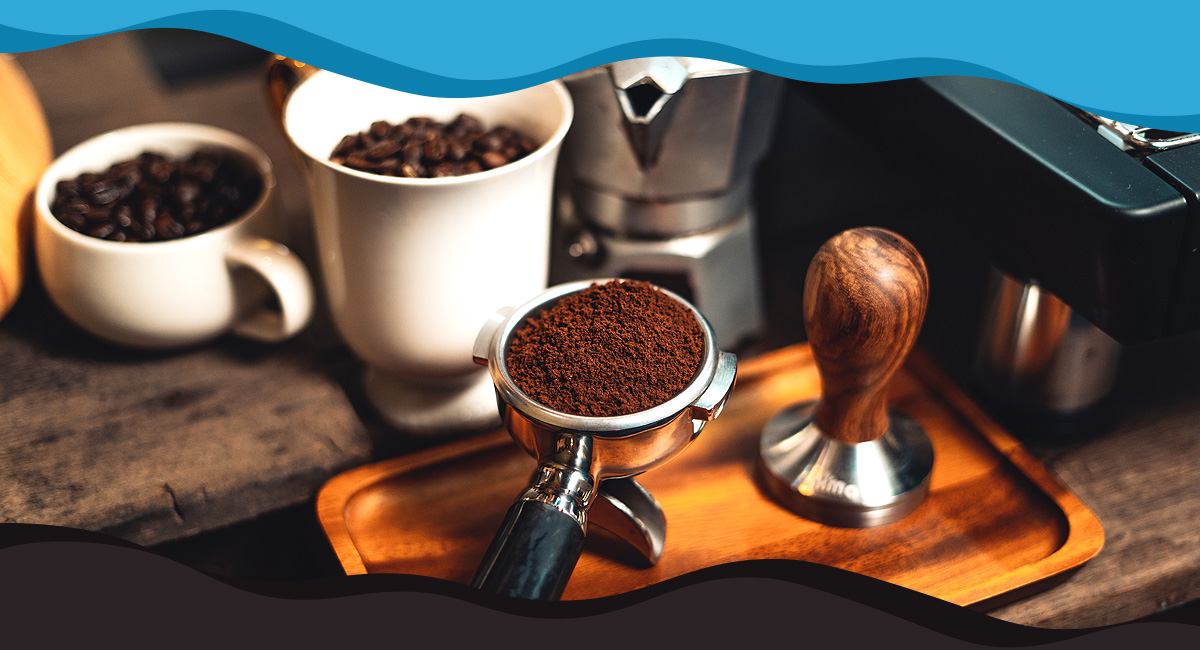
The Art of Coffee Grinding for Espresso
The grind size of your coffee beans is a crucial factor in creating a perfect espresso shot. Unlike other brewing methods, such as using a French press, espresso requires a very fine grind to ensure the correct extraction. This is because the water passes through the coffee quickly, and a finer grind allows for the necessary resistance to extract the rich flavours and aromas that define a good espresso.
Importance of Grind Size for Espresso
The grind size directly influences the rate of extraction and, consequently, the taste of your espresso. If the grind is too coarse, the water will pass through too quickly, leading to under-extraction. This results in a weak, sour espresso as the essential oils and flavours haven’t had enough time to develop.
Conversely, if the grind is too fine, the water will struggle to pass through, causing over-extraction. This results in a bitter, burnt taste, as the water extracts too many soluble compounds from the coffee.
Tips on Achieving the Ideal Grind Consistency:
1. Use a Quality Grinder
Invest in a good coffee bean grinder. Burr grinders offer a consistent grind size compared to blade grinders, which can produce uneven grinds, affecting the extraction process.
2. Adjust According to the Beans
Different beans and roast levels may require slight adjustments to the grind size. For instance, darker roasts might need a slightly coarser grind than lighter roasts due to their brittleness.
3. Test and Taste
Start with a recommended grind setting for espresso and pull a shot. If the shot tastes sour, adjust to a finer grind. If it tastes bitter, adjust to a coarser grind. This trial and error process will help you find the perfect grind size for your beans.
How Grind Size Affects Extraction and Flavour
The grind size plays a pivotal role in the extraction process, which determines the final flavour of your espresso. Here’s how it works:
Surface Area
Finer grinds have more surface area, allowing more interaction between the water and coffee, leading to a fuller extraction of flavours.
Flow Rate
The resistance provided by the finer grind slows down the water flow, ensuring it spends enough time in contact with the coffee to extract the rich, complex flavours.
Uniformity
Consistent grind size ensures uniform extraction. If the grind is uneven, some particles will be over-extracted (bitter) while others will be under-extracted (sour), resulting in an imbalanced flavour profile.
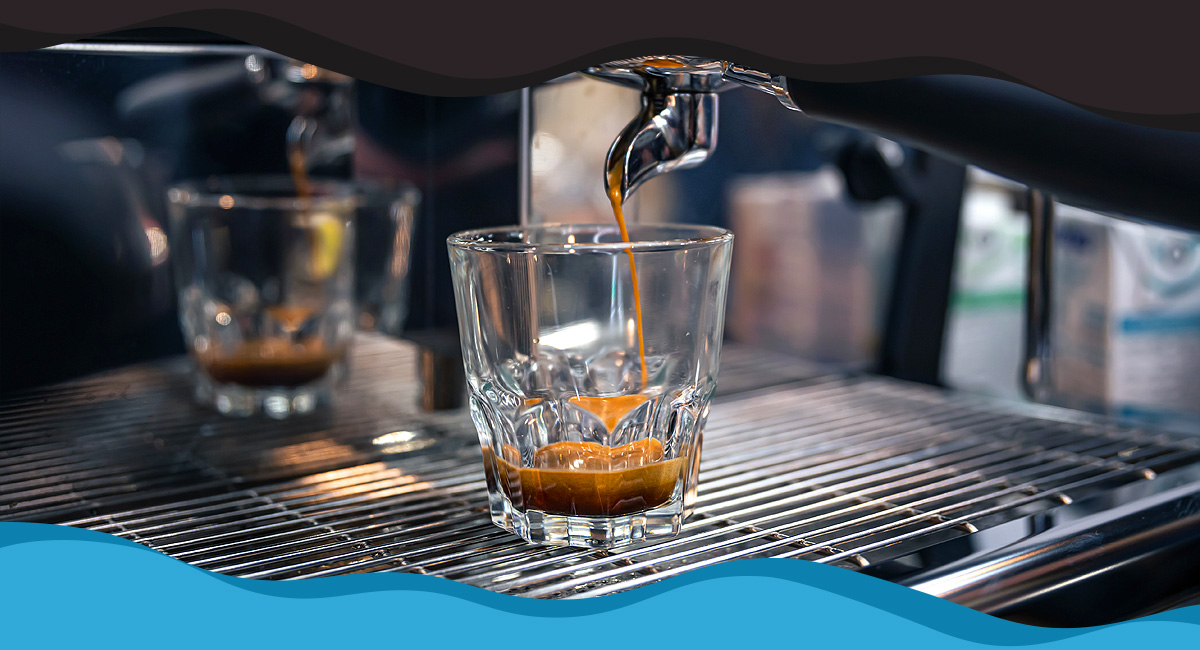
Mastering Espresso Timing
Importance of Timing in Espresso Extraction
Timing is a critical element in the art of espresso making. The duration for which the hot water interacts with the coffee grounds directly influences the flavour profile of your espresso. Extracting the perfect shot typically takes between 25 to 30 seconds. This time frame allows for the optimal extraction of flavours, oils, and aromatic compounds that make espresso rich and complex.
Proper timing ensures that the balance between under-extraction and over-extraction is maintained. Under-extraction occurs when the water passes through the coffee too quickly, resulting in a sour, weak shot because essential flavours and oils haven't been fully developed. Over-extraction, on the other hand, happens when the water takes too long to pass through the coffee, leading to a bitter, harsh taste as too many soluble compounds are extracted.
Timing Espresso Shots For Perfect Balance
1. Start with a Stopwatch
Use a stopwatch or the built-in timer on your espresso machine to measure the extraction time. Begin timing as soon as you start the shot and stop as soon as the espresso reaches your desired volume.
2. Aim for Consistency
The standard benchmark is to aim for an extraction time of 25 to 30 seconds. This range generally produces a well-balanced espresso. However, slight variations might be necessary based on the specific beans and personal taste preferences.
3. Adjust the Grind Size
If your shot pulls too quickly (under 25 seconds), try adjusting your grind to be finer. This will increase resistance and slow down the flow rate. Conversely, if your shot takes too long (over 30 seconds), make the grind coarser to speed up the extraction process.
4. Monitor and Tweak
Monitor the flow and adjust as needed. A well-timed shot will start with a slow drip and gradually increase to a steady stream, ending with a final drip. If the flow is too fast or too slow, make the necessary grind adjustments and test again.
5. Taste Testing
The ultimate test is in the taste. A perfectly timed espresso will have a balanced flavour with a harmonious blend of sweetness, bitterness, and acidity. Continuously taste your shots and adjust timing as necessary to achieve the perfect balance.
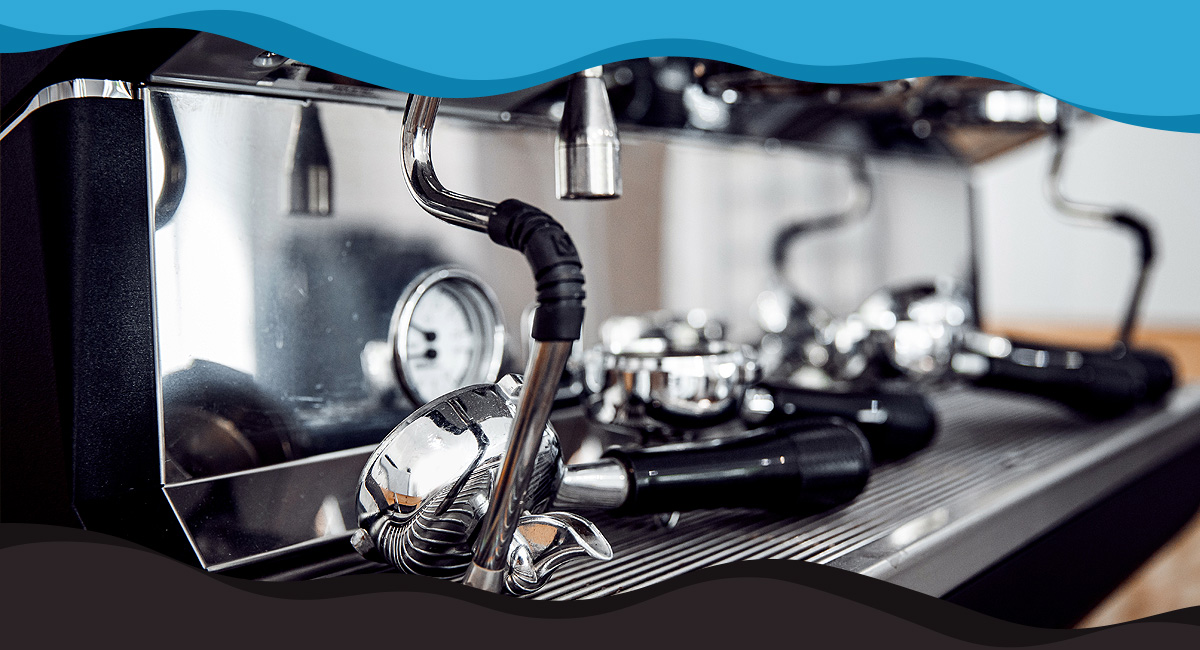
Calibrating Your Espresso Machine
Proper calibration of your espresso machine is essential for achieving optimal performance and extracting the best flavours from your coffee. This involves adjusting various settings to ensure your machine operates at peak efficiency. Here's a step-by-step guide to help you calibrate your espresso machine effectively.
Initial Setup
-
Start by familiarising yourself with your machine’s manual to understand its specific calibration features and settings.
-
Ensure your machine is fully preheated, which typically takes about 15-30 minutes.
-
A fully heated machine ensures stable temperature during extraction, which is crucial for consistent espresso quality.
Adjusting the Pressure
-
The ideal pump pressure for espresso extraction is around 9 bars. Use a pressure gauge to monitor this.
-
If the pressure is too high or too low, adjust the pump settings according to the manufacturer’s instructions. This may involve turning a screw or dial inside the machine.
-
Consistent pressure is vital for extracting the full range of flavours from your coffee.
Setting the Temperature
-
The optimal brewing temperature for espresso is between 90-96°C (194-205°F). Most modern machines have a digital temperature control. Set it within the ideal range and make fine adjustments based on taste.
-
A lower temperature may produce a sour shot, while a higher temperature can result in bitterness.
-
Maintaining the correct temperature ensures that the coffee extracts evenly and brings out the desired flavour profile.
Water Quality
-
The quality of water significantly impacts the taste of your espresso. Use filtered water to prevent mineral buildup and ensure a clean taste.
-
Aim for a water hardness level of around 70-100 ppm. Too hard or too soft water can affect extraction and flavour.
-
Clean, filtered water prevents off-flavours and mineral deposits in the machine, which can affect both the taste of the espresso and the longevity of the equipment.
Calibrating the Grinder
-
Adjust the grinder to achieve a fine, consistent grind. The grind size should be such that it allows for a 25-30 second extraction time.
-
If the extraction time is off, adjust the grind size; finer for slower extraction and coarser for faster extraction.
-
Consistent grind size is essential for uniform extraction, ensuring each shot of espresso has a balanced flavour.
Testing and Tasting
-
After adjusting the settings, pull a test shot of espresso. Observe the flow rate and timing. The ideal extraction time is between 25 to 30 seconds.
-
Taste the espresso. If it’s balanced, with good crema and a harmonious flavour profile, your machine is well-calibrated. If not, make minor adjustments to the pressure, temperature, or grind size and test again.
-
Taste testing is crucial as it helps you fine-tune your settings based on the specific beans you are using.
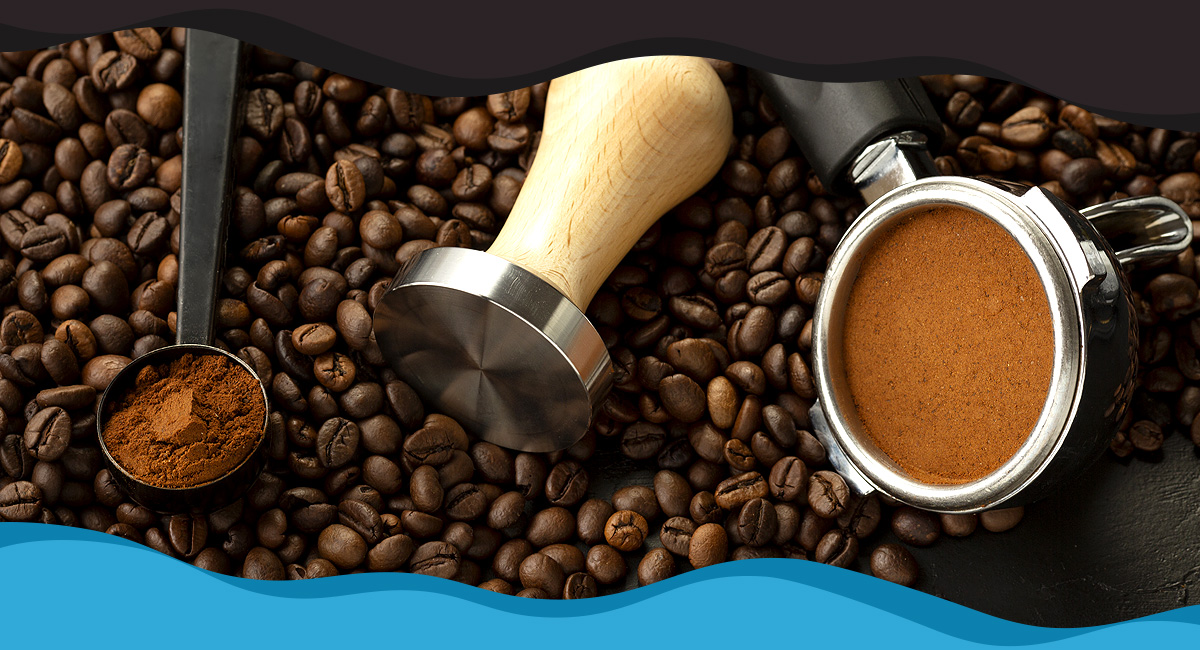
The Role of Tamping in Espresso Preparation
Tamping is a critical step in espresso preparation that often doesn’t get the attention it deserves. It involves compressing the coffee grounds in the portafilter to create a uniform surface through which water can flow evenly. Proper tamping ensures that the coffee is extracted consistently, which is essential for achieving a well-balanced espresso shot.
Techniques for Proper Tamping
When it comes to tamping, three main factors play a crucial role: pressure, angle, and consistency.
Pressure
The ideal pressure for tamping is around 13.6 kilograms. To achieve this, you can use a bathroom scale for practice until you develop a feel for the right amount of force. Consistent pressure is essential to avoid uneven extraction, which can lead to variations in the flavour of your espresso.
Angle
It is vital to keep the tamper level as you press down. An uneven tamp can cause the water to flow through the coffee unevenly, leading to over-extraction on one side and under-extraction on the other. This imbalance can result in a shot that is both bitter and sour. To ensure even tamping, hold the tamper firmly and press straight down, checking that the surface of the tamped coffee is level.
Consistency
Consistency in tamping is key to producing uniform espresso shots. Every time you tamp, aim to apply the same amount of pressure with a level tamp. This uniformity helps maintain the same flow rate and extraction time, resulting in a balanced shot. Develop a tamping routine that you follow every time to build muscle memory and ensure consistent results.
How Tamping Affects Espresso Shot Quality
Tamping directly impacts the quality of your espresso shot by influencing the flow rate of water through the coffee grounds. Properly tamped coffee creates a uniform puck that resists the flow of water, allowing it to extract the coffee evenly. This even extraction is crucial for developing the complex flavours and rich aromas that define a great espresso.
When tamping is done correctly, the water passes through the coffee at a consistent rate, extracting the right balance of oils, acids, and flavours. This balance results in an espresso that is smooth, rich, and full-bodied, with a pleasant crema on top.
Improper tamping, however, can lead to channelling, where water finds the path of least resistance through the puck. This causes uneven extraction, with some parts of the coffee being over-extracted (bitter) and others under-extracted (sour). Channelling not only ruins the taste but also affects the crema, resulting in a subpar espresso experience.
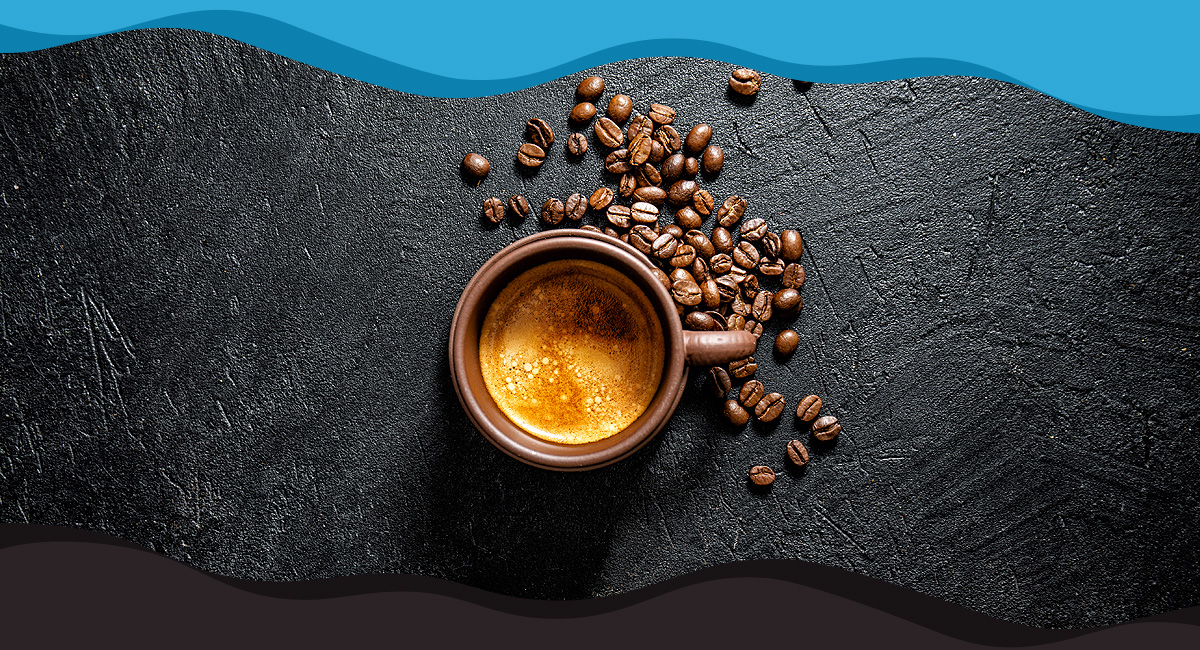
Consistency: The Key to Perfect Espresso Every Time
Consistency is paramount in espresso making. Achieving and maintaining consistency ensures that every shot of espresso you pull is of the highest quality, providing a reliable and enjoyable coffee experience every time. In a café setting, consistency keeps customers coming back, while at home, it ensures you always enjoy your coffee at its best.
The Importance of Consistency in Espresso Making
Consistency in espresso making involves maintaining uniformity in every aspect of the process: from the grind size and dose to the tamping pressure and extraction time. This uniformity ensures that each shot of espresso has a balanced flavour profile, with the right mix of sweetness, bitterness, and acidity.
Inconsistent preparation can lead to significant variations in taste, even when using the same coffee beans. Small changes in any step can result in under-extraction or over-extraction, affecting the overall flavour and texture of the espresso. Therefore, consistency is not just a professional standard but a fundamental aspect of mastering the art of espresso making.
Tips for Maintaining Consistency Across Different Batches
Use a Digital Scale
Measure your coffee dose accurately using a digital scale. Aim for the same weight of coffee grounds for each shot, typically around 18-20 grams for a double espresso. This precision helps in maintaining a consistent flavour profile.
Grind Consistency
Use a high-quality burr grinder to ensure uniform grind size. Regularly check and adjust the grinder settings to maintain consistency, especially when switching between different coffee beans or roast levels.
Tamping Technique
Develop a consistent tamping routine. Apply the same pressure (around 30 pounds) with a level tamp each time. Practising this technique will help you achieve a uniform coffee puck, which is crucial for even extraction.
Extraction Time
Monitor the extraction time for each shot. Aim for a consistent time frame of 25-30 seconds for a balanced espresso. Adjust the grind size if the extraction time falls outside this range.
Machine Calibration
Regularly calibrate your espresso machine to ensure stable pressure and temperature settings. Consistent machine performance is essential for producing uniform shots.
Routine Cleaning
Keep your equipment clean. Regularly clean the portafilter, basket, and group head to prevent coffee residue buildup, which can affect the taste and consistency of your shots.
Use Fresh Beans
Ensure your coffee beans are fresh and stored properly. Fresh beans produce better flavour and crema, contributing to a consistent espresso experience.
Keep a Log
Maintain a journal or log of your espresso-making process, noting down the dose, grind size, extraction time, and taste profile of each shot. This practice can help you identify patterns and make necessary adjustments for consistency.
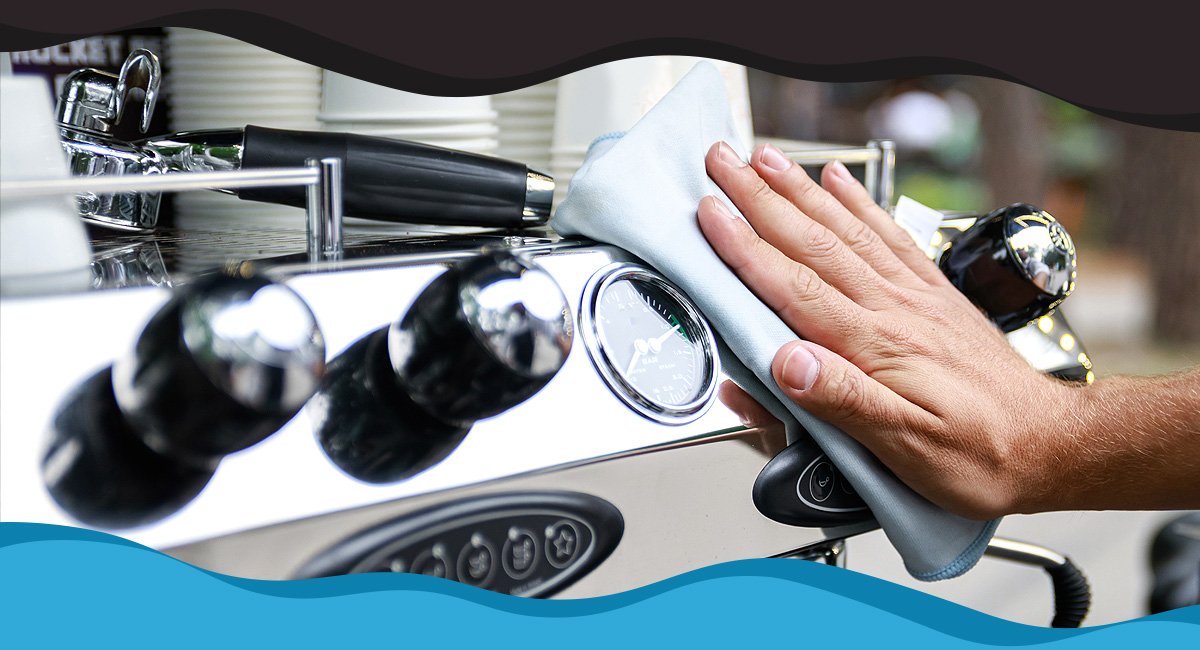
Cleaning & Maintenance of Espresso Machines
Regular cleaning and maintenance of your espresso machine are vital for ensuring its longevity and the quality of the espresso it produces. A well-maintained machine not only functions more efficiently but also consistently delivers high-quality coffee. Here's a guide on how to keep your espresso machine in top condition and why it's essential for the taste and quality of your espresso.
How Cleaning Affects the Taste and Quality of Espresso
Cleanliness directly impacts the taste and quality of your espresso. Residues from coffee oils and milk can become rancid over time, introducing off-flavours into your espresso shots. Regular cleaning prevents these residues from affecting the taste, ensuring each shot is fresh and full-flavoured.
Mineral buildup from hard water can clog the internal components of your machine, affecting water flow and temperature stability. This can lead to inconsistent extraction, resulting in espresso that is either under-extracted (sour) or over-extracted (bitter). Descaling removes these mineral deposits, maintaining the machine’s performance and the quality of your espresso.
A clean machine operates more efficiently. Proper maintenance ensures that the water pressure and temperature remain stable, which are crucial for consistent espresso extraction. An efficiently running machine produces espresso with a rich crema, balanced acidity, and full-bodied flavour, making regular cleaning and maintenance an indispensable part of your espresso-making routine.

Espresso Presentation and Serving
A well-presented espresso not only looks appealing but also ensures the optimal taste and enjoyment of the coffee. Here are some tips on how to present and serve espresso to make a lasting impression.
Tips on Presenting & Serving Espresso
1. Use the Right Cups
The choice of cup can significantly impact the espresso experience. Use pre-warmed demitasse cups, which are small cups specifically designed for serving espresso. Warming the cups before use helps maintain the temperature of the espresso, ensuring it stays hot and aromatic.
2. Focus on Crema
The crema, a golden-brown layer of foam on top of the espresso, is a hallmark of a well-pulled shot. It should be thick and velvety, covering the entire surface of the espresso. To achieve this, ensure that your machine is well-calibrated and that the coffee beans are fresh and finely ground. The crema not only adds to the visual appeal but also locks in the aroma and enhances the flavour.
3. Optimal Serving Temperature
Serve the espresso immediately after extraction at a temperature of around 67-70°C (153-158°F). Serving it too hot can scald the palate, while serving it too cold can dull the flavours. The optimal temperature ensures that the espresso is enjoyed at its best.
4. Garnishing
While traditional espresso is served plain, you can offer a small garnish to enhance the presentation. A thin slice of lemon peel, a chocolate-covered coffee bean, or a small biscotti on the side can add a touch of elegance and elevate the customer experience.
5. Attention to Detail
Pay attention to the little details. Ensure the cups are spotless, the saucers are clean, and the spoons are polished. A clean presentation reflects the care and precision that went into making the espresso.
6. Accompaniments
Providing a small glass of sparkling water alongside the espresso is a common practice in many cafes. The sparkling water acts as a palate cleanser, allowing the customer to fully appreciate the complex flavours of the espresso.
Learn more: How To Perfectly Present Coffee
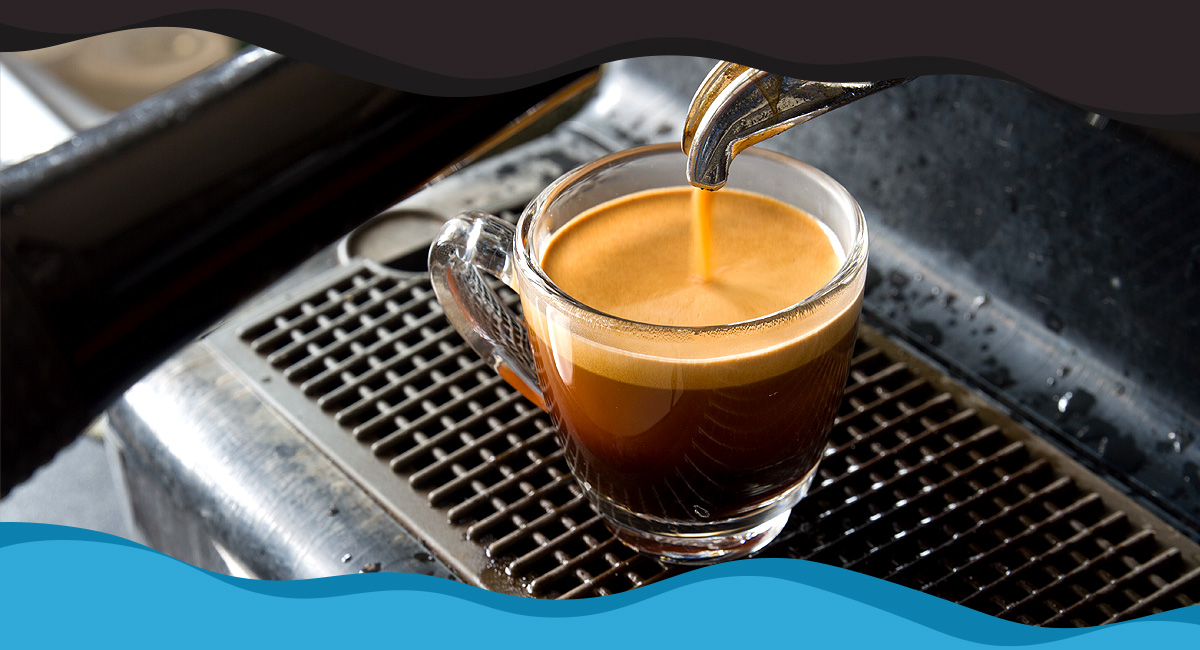
Common Espresso Mistakes & How to Avoid Them
Even seasoned baristas can make mistakes when brewing espresso. Understanding and avoiding common pitfalls can help you consistently produce high-quality espresso shots. Here are some frequent errors in espresso making and tips on how to avoid them, along with troubleshooting advice for common issues.
How Cleaning Affects the Taste and Quality of Espresso
One of the most common mistakes is using the wrong grind size. If the grind is too coarse, the water flows through too quickly, leading to under-extraction and a sour, weak espresso. Conversely, if the grind is too fine, the water struggles to pass through, causing over-extraction and a bitter taste.
To avoid this, adjust your grinder settings to achieve a fine, consistent grind. Test different settings to find the ideal grind size that produces a balanced shot within the optimal extraction time of 25-30 seconds.
Uneven Tamping
Another frequent error is uneven tamping. Inconsistent tamping pressure or an uneven tamp can lead to channelling, where water flows unevenly through the coffee puck. This results in parts of the coffee being over-extracted and others under-extracted.
To prevent this, practice tamping with consistent pressure, aiming for about 30 pounds of force. Ensure the coffee puck is level to promote even extraction. Using a flat tamper and a tamping mat can help achieve uniform tamping.
Inconsistent Dosing
Inconsistent dosing is another common issue. Using different amounts of coffee for each shot can lead to inconsistent results. Variations in the dose affect the extraction time and flavour profile of the espresso.
To maintain consistency, use a digital scale to measure your coffee dose accurately. This helps maintain the same flow rate and extraction time, resulting in uniform flavour across different shots.
Not Pre-Heating The Machine
If your espresso machine isn’t properly preheated, the water temperature can fluctuate, leading to inconsistent extraction and flavour.
Ensure your machine is fully preheated before brewing, typically for 15-30 minutes. Running a blank shot (without coffee) can heat the portafilter and group head, ensuring stable brewing temperature.
Using Poor Quality Water
Using unfiltered or hard water can introduce off-flavours and cause mineral buildup in your machine, affecting the taste and performance.
To improve the taste and protect your machine from scale buildup, use filtered water. Regularly descale your machine to maintain optimal performance.
Troubleshooting Common Espresso Issues
Issue
Cause
Solution
Espresso tastes sour
Under-extraction
Check the grind size and make it finer to slow down the extraction. Ensure you are using the correct dose and tamping evenly. Also, verify that the extraction time is within the 25-30 second range.
Espresso tastes bitter
Over-extraction
Adjust the grind size to be slightly coarser to speed up the extraction. Check that you’re not tamping too hard and that the dose is not too high. Confirm the water temperature is not too hot.
Espresso is weak or watery
Under-dosing or a coarse grind
Increase the coffee dose and adjust the grind size to be finer. Ensure you’re applying consistent tamping pressure and that the machine is properly preheated.
Inconsistent quality
Inconsistent technique or equipment issues
Standardise your process—measure your dose, grind, and tamping pressure consistently. Regularly clean and maintain your machine to ensure it’s functioning correctly.

Craft Your Perfect Espresso With PureGusto
Knowing how to make the perfect espresso is a valuable skill that can take your coffee game to the next level. It involves several key elements: selecting quality beans, achieving the right grind size, timing your shots, calibrating your machine, and maintaining proper tamping techniques.
Whether you want to enjoy coffee at home, or run a busy coffee shop and want to build a reputation for the quality of your drinks, mastering the art of the espresso is the foundation upon which the best coffee is built.
At PureGusto we supply everything you need to serve consistently great espresso, from award winning premium coffee beans that are convection roasted for the perfect flavour, to the latest espresso machines, grinders and equipment. We also stock a comprehensive range of supplies including delicious coffee syrups, sundry items and disposables.
Browse our range and find out just how good the perfect espresso can be!